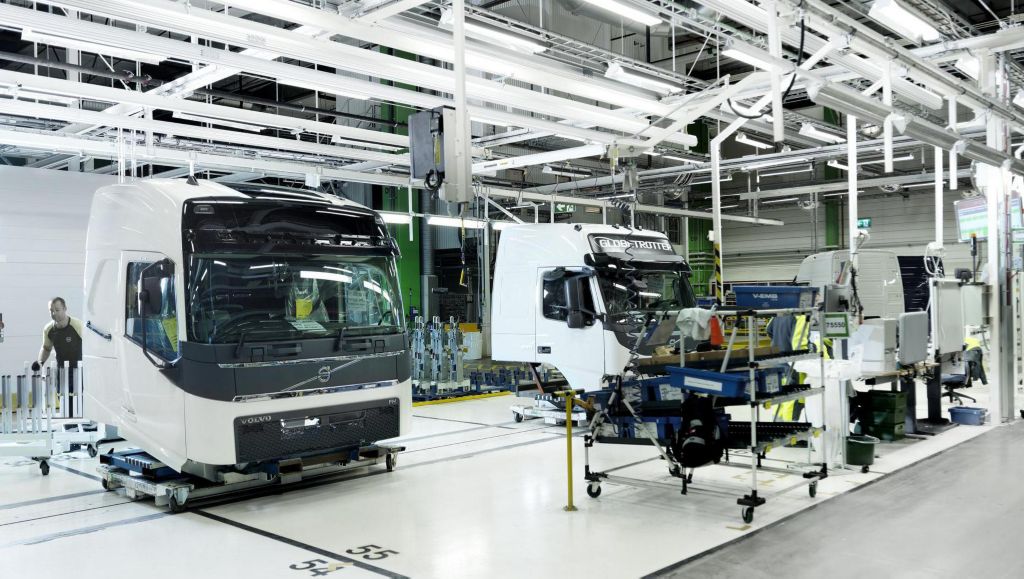How a Volvo truck cab is assembled


The key is having a highly organised process, where every single detail and action has been designed for maximum speed, precision and efficiency.
“It’s important that everything works together,” says Paulina Lundgren, Team Leader, Production Engineering, Cab Trim. “Everything has to work smoothly: the technical solutions, production planning, delivery of material and operators’ way of working. It all has to be perfect.”
Production starts with just a cab shell, which has been manufactured and painted at Volvo Trucks’ cab plant in Umeå, in northern Sweden, before being shipped by train to the Tuve plant in Gothenburg. Staff prepare the cab for the main assembly line by removing the dashboard plate and the front lid. The cab is then fed into the main assembly line, where it will move at a speed of one metre per minute.
The cab will pass through 56 different work stations, where personnel have an average of 5.5 minutes to complete their tasks before it moves to the next station. Each has been carefully designed and structured to ensure maximum efficiency and speed, with all the necessary tools and parts located as close and conveniently as possible. Safety and ergonomics are also paramount, with staff provided with plenty of lifting aides and support.
“All stations are built so that anybody can work on them,” says Paulina Lundgren.
The assembly line is formed according to a fishbone structure: one main line through the middle, with smaller preassembly lines for larger modules along the sides. When it comes to the dashboard, there are even preassembly lines for the preassembly: individual components are put together to make small modules, which are then assembled into a complete dashboard that is then slotted straight into a cab on the main line.
Everything has to work smoothly: the technical solutions, production planning, delivery of material and operators’ way of working. It all has to be perfect.
An average cab will consist of between 750-900 parts. However, there are around 3,500 different part numbers and with so many different specifications, virtually every cab is unique. The process is exceptionally complex, designed to limit the risk of human error. For example, to ensure parts pickers collect the right parts for each cab, a system of lights indicate which parts are needed for the next cab. Once everything has been collected and moved to the main line, the parts picker simply presses a button for the next sequence of lights.
The vast majority of parts and components are installed manually. However, two robots are used to install windscreens, side windows and roof hatches on the Volvo FH cabs. Each lifts the glass screens using suction caps and carefully rotates the edge under a glue dispenser. Various sensors surrounding the cab ensure it is in exactly the right position for the robotic arms. Each robot is programmed to know exactly which model of cab should be on the line at any given moment and is calibrated to place the glass within 0.1 mm.
At the final stations, staff test all the control functions. Bright lights illuminate the cab, to verify paint and body finish. It is then transported to the chassis line, where it is connected to its chassis and driveline.